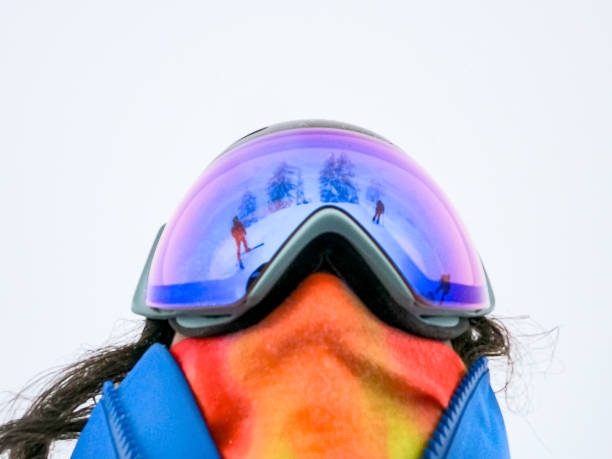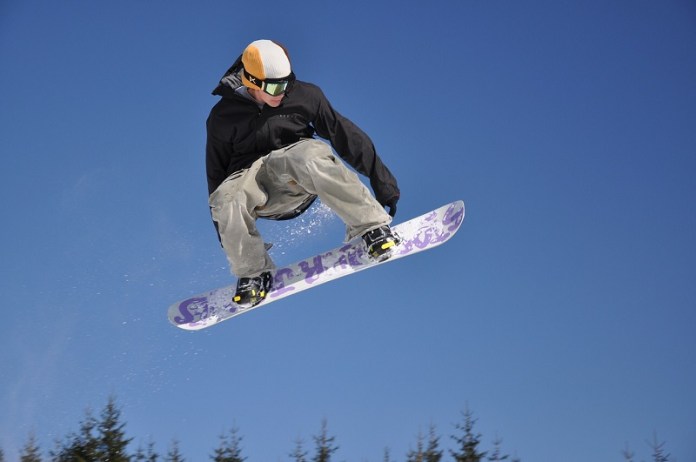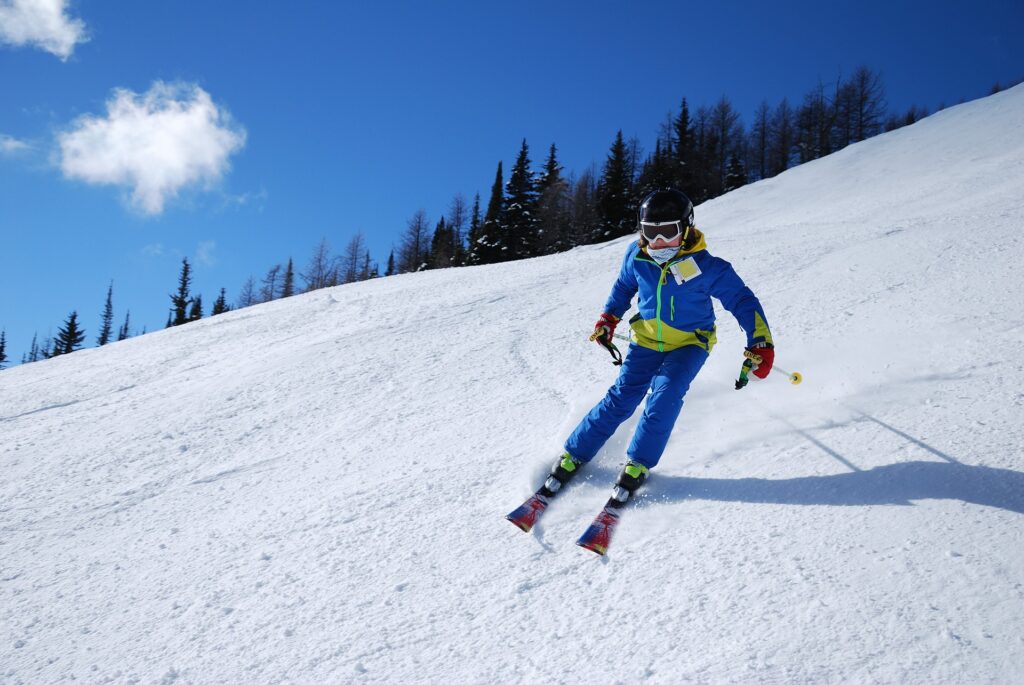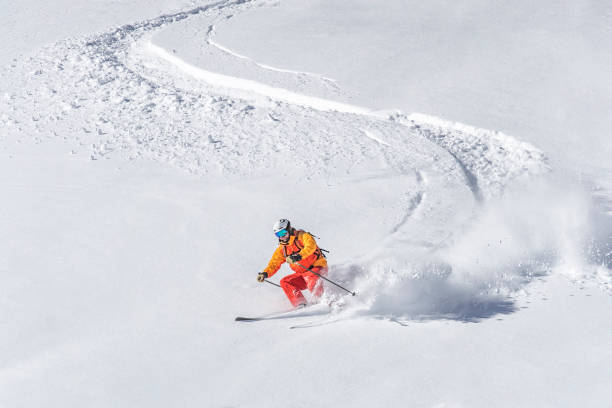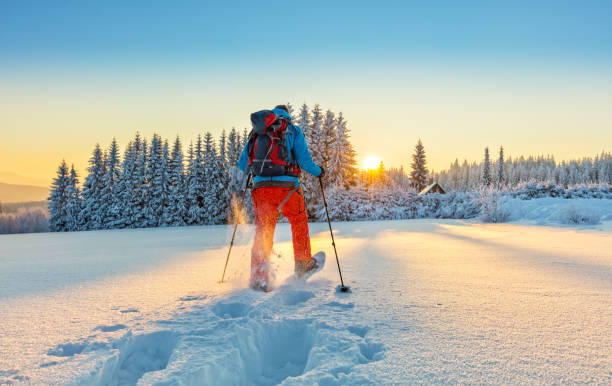Also known as downhill skiing, alpine skiing is potentially the most recognizable variety of skiing. Its popularity continues to increase as the sport continues to develop and gain more prevalence. Essentially, it’s an activity where participants ski down snow-covered slopes.
Related read: The Best Ski Poles in 2021 – Top Reviews
One thing that differentiates Alpine skiing is the type of skis that are used. For this type of activity, the skier always uses fixed heel bindings with their skis, and it is popular wherever you come across snow and mountains.
There are other types of skiing that don’t use fixed heel bindings, for example, Nordic skiing, cross country skiing, ski jumping, and also ski mountaineering, which all require different and specialist skills to take part in.
Alpine skiing takes place all around the world, as long as there is snow, mountains, and some kind of infrastructure it is possible to ski. It is a very popular winter sport around the world, including in Europe, America, East Asia, and New Zealand.
What is the Background to Alpine Skiing?

It is thought that the first Alpine ski clubs started in the 1800s in Australia, the Swiss Alps, and America and it has grown in popularity and spread around the world ever since they first started.
Most Alpine skiing is done at ski resorts that have all the infrastructure required to support this now common tourist activity. In these resorts, you will find ski lifts to take people up the mountain and the terrain is all groomed and well planned.
There is little risk of avalanches and trees are cut down to make the ski runs safer. Some resorts can even provide the snow if the weather doesn’t oblige, so they are very controlled, regulated, and safe environments for skiers.
However, for some skiers, this manmade regimen puts them off and they prefer to ski in more natural environments. This is called going off-piste or backcountry skiing and can be known as extreme skiing and is definitely one for experienced skiers only.
Competitive alpine skiing exists and is largely based on downhill ski races. There are four key competitive options which are downhill skiing, super giant slalom, giant slalom, and then just plain slalom.
In the slalom ski races, the courses have regular turns whereas for downhill skiing there are fewer turns, and the skiers can reach incredibly high speeds as they race downhill towards their much-coveted prize.
Are There Different Types of Alpine Skiing?
Within Alpine skiing, there are several different types and styles depending on your preference and what it is you are hoping to achieve. Here are some of the most common types of Alpine skiing.
Recreational

Most people who take part in alpine skiing each year are simply recreational skiers who like to enjoy the activity as part of a winter holiday, escaping for a few days to have fun out on the slopes and show off their skills.
Recreational skiers tend to visit resorts once or twice a year, enjoy the ski lifts, and spend time out on the slopes at a holiday resort. The good thing about the ski resorts is they are so well controlled and maintained that they provide the perfect environment for anyone who wants to learn to ski safely.
You may also like:12 Best Ski Jackets of 2021
Developments in ski design and in the way the resorts themselves have been designed make it possible for anyone to learn to ski while enjoying a very scenic winter vacation. With options to rent equipment, it doesn’t even need to be hugely expensive to get yourself kitted out for skiing.
Freestyle Skiing

This is more of an Olympic style of skiing and it takes some of its inspiration from skateboarding and ice skating. Freestyle includes many different disciplines including styles such as aerials and moguls and is a more professional type of skiing.
Free Skiing

Another form of skiing is freeskiing which is closely linked with freeride snowboarding. This involves skiing off-piste and performing jumps using the natural terrain. There are even special skis designed for this type of skiing to help with jumping and landing.
You may also like: 12 Best Ski Helmets 2021 – Top Reviews
Backcountry Skiing

The backcountry is anywhere that is not part of the official ski resort slopes, so it is essentially skiing out in nature, using unmarked and unplanned routes. It’s incredibly challenging and will use all your skiing skills.
Anyone planning to go backcountry skiing must be prepared as the terrain and weather outside of the resort can all be very unpredictable. You should always ask about where is safe to go and tell someone before you head off.
Related read: Best Ski Boots 2021
How Did Skiing Become a Thing?
It is thought skiing first started back in prehistoric times when wooden planks were used to help get across land that had frozen over in the winter. Such planks have been found preserved in peat bogs in countries including Norway and Russia.
Skis were largely used in cold countries to help transport goods across snowy surfaces, and they became part of military training in Norway in the 1700s. With the Norwegian Army running skiing skills competitions it was later on in the 1850s that it became transformed from a method of transportation to a recreational sport.
Also read: Best Ski Gloves 2021
The first recorded downhill skiing competition was held in Oslo in 1868 which saw some of the key techniques in Alpine skiing starting to take shape. The word slalom comes from the Norwegian word which means a trail on a slope.
Competitions run in Telemark often included steep mountains and sharp turns, using the natural terrain of the area. It is thought the first slalom competitions were held in Telemark in around 1870 although the term slalom wasn’t used until around 1906.
It took a few decades for the sport to then spread around the world and the first official slalom competition was held in 1922 in Switzerland, and the sport grew in popularity from there, leading to the organized and modern ski resorts which we have today.
